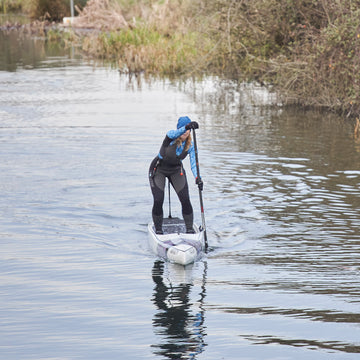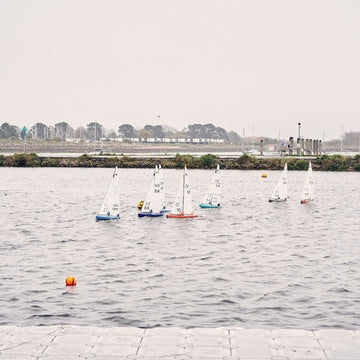Hull cleaning and repair.
Two videos - one on boat cleaning and one on gelcoat repair - enjoy.
Hull Cleaning
When sorting out an old pre loved GRP dinghy you might find yourself looking at old stickers, rusty marks from Stainless that's not the ‘316 grade' it claims to be and grime in the gelcoat deck texture that makes our new loved acquisition look just too tired to be fast.
To tackle those old hard stickers that seemed to want to fall off on the second day of the regatta, but that are now fixed hard to your boat. I like to keep my boat as sticker free as possible except for my Team Rooster hull stickers of course, so I use a hair drier to soften the surface and a ScrapeRite Plastic Blade to find the edge (Be warned a mucky hair drier does not make your mother or wife happy). Acetone can be used to remove the residue of the glue or why not try our latest cleaning product, called the Rooster Magic Sponge. Its best explained by our youtube video above.
However, if its mould that you are keen to budge, you might consider using Muc-off or equivalent. Its a mild alkaline that is great for removing boat mould as well as oil or grease from transporting your boat.
Gelcoat Repair
Once cleaned you are now likely to have found the parts of the boat that require a small gelcoat repair, you should be aware that there are two distinct types of GRP boats - Epoxy and Polyester. The latter tends to be used on the heavier builds like Laser’s, 400’s, 200’s, 4000’s,etc, whereas some boats are Epoxy such as the Rooster Streaker, Merlin Rocket, National 12, RS300, 49er etc. where weight and stiffness are critical. Epoxy is the top trump in GRP, but it does come with one small drawback where gelcoat repairs are concerned.
Gelcoat Repair on Polyester Boat
With a conventional Polyester boat - such as a Laser, you can apply your dawn grey or Vela Grey Gelcoat, mixed with a fresh catalyst, directly to your damaged area. A good idea is to mask off the job you intend to complete, which ensures any excess gelcoat you use will be limited to the area you want to patch. Check first if the gelcoat is called a 'flow coat', sometimes its also called brush gelcoat. Flow coat has some wax added to the resin to ensure you don’t get a sticky residue to the finish of the gelcoat. If you do not have flow coat - its probably better to completely cover the job in cling film to remove the air, ensuring the residue will not form. But relax, Rooster's Gelcoat is all flow coat.
Gelcoat Repair on an Epoxy Hull
Epoxy boats require a slightly different approach to gelcoat repairs. Epoxy, even after it has cured, hinders polyester from hardening and since gelcoat is a polyester based resin, this can cause you some curing issues. Boat builders don't have this problem as they put the gelcoat onto their mould and let it harden before they apply the Epoxy and foam sandwich layup. However, when you have a gelcoat repair to do on an Epoxy hull, you have to tackle the problem differently to a normal polyester gelcoat repair. As I said, its the curing of the gelcoat that's the issue as any contact with the epoxy layup will prevent the gelcoat from curing and hardening. Best practice is to use a simple polyester car filler or gelcoat filler that is a quick to go off to cover over the patch before applying the final top coat of finished gelcoat. This works a treat.
You might also consider using a hair drier for gently warming the boat and gelcoat to help it harden in our cooler UK conditions.
I find that I get carried away with gelcoat repairs, so I try hard to contain my excitement with masking tape. Putting on gelcoat can always be fun, but the day afterwards you realise that the hard part starts - rubbing down the high spots! I am super lazy; so I tend to start with some pretty rough wet and dry paper. In fact on this video I think I started with some 60 grit sand paper. But actually 120 wet and dry paper with a little water to lubricate the grit of the paper works well.
The important thing is to rub using a flat block. Sometimes the delicate last little parts can be done with fingers as you are able to feel the high spots.
Above is a short video of a Gelcoat Repair on a Polyester Dinghy - in this case a Laser®. I hope you like it.











 Select Store
Select Store
 EU
EU
 US
US

